Passiflora from the family Passionaceae in the natural environment, which is the tropics, is represented by evergreen lianoid shrubs or herbaceous plants. The flower owes its name to the missionaries who arrived in South America and compared the plant with the sufferings of Christ.
Material Content:
Popular houseplants
In the wild, the genus includes more than 400 species, however, units are cultivated in a room environment.
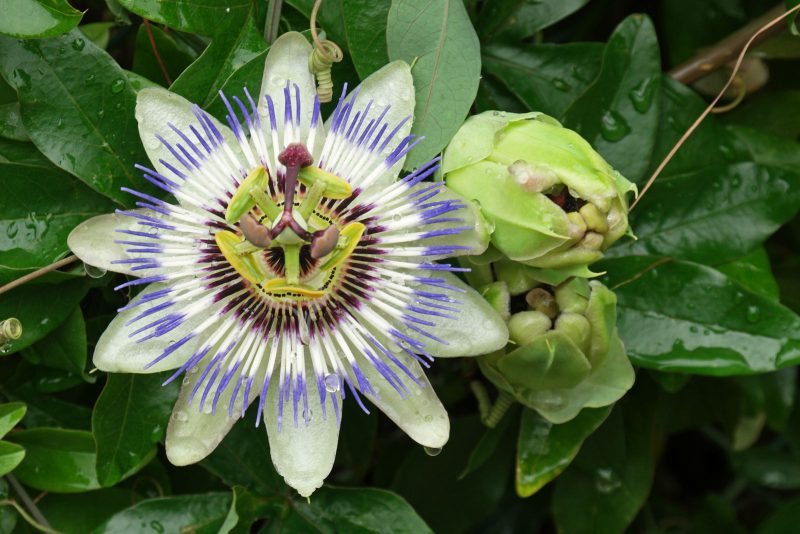
Most popular:
- Passiflora blue is an evergreen lianoid plant, on lignified shoots of which single lilac, red, pink or greenish-blue flowers with an exquisite aroma are formed. After flowering, orange fruits are formed.
- Passiflora is banana or delicate - a decorative liana that can withstand a drop in the mercury column to -2 ° C. It is distinguished by beautiful flowering, in which large pink flowers bloom, and abundant fruiting already in the first year of life.
- Passiflora incarnata is a medicinally valuable species whose dried shoots are used to create tea with soothing properties. The flowers are colored in various shades of purple, and the bright yellow fruits have a sweet and sour taste.
- Three-lane passiflora is a species with very decorative leaves, which are decorated on the upper side with three purple stripes.Greenish or white with a tinge of yellow flowers exude a marvelous aroma, giving rise to the imagination of the image of lilac.
- Edible Passiflora - a common species in the culture with creamy-white flowers, in place of which large, aromatic fruits are formed, known to most under the name "passion fruit".
Features of passion flower growing
When growing an exotic beauty in the house, it is necessary to take into account several of its features:
- Rates of growth. In the natural environment, the creeper plant develops very quickly, but in the home environment, the pace is slightly reduced.
- Fruiting. With proper care in an apartment environment, it is also possible to get fruits that are edible and very tasty in most species.
- Bloom. Beautiful, fragrant flowers bloom from mid-summer to mid-autumn, with a lifespan of only 24 hours.
Passiflora: home care
In order to grow a beautiful plant and for many years to maintain its decorativeness at the proper level, it is necessary to adhere to all recommendations for its maintenance and care.
Conditions for good passionflower growth
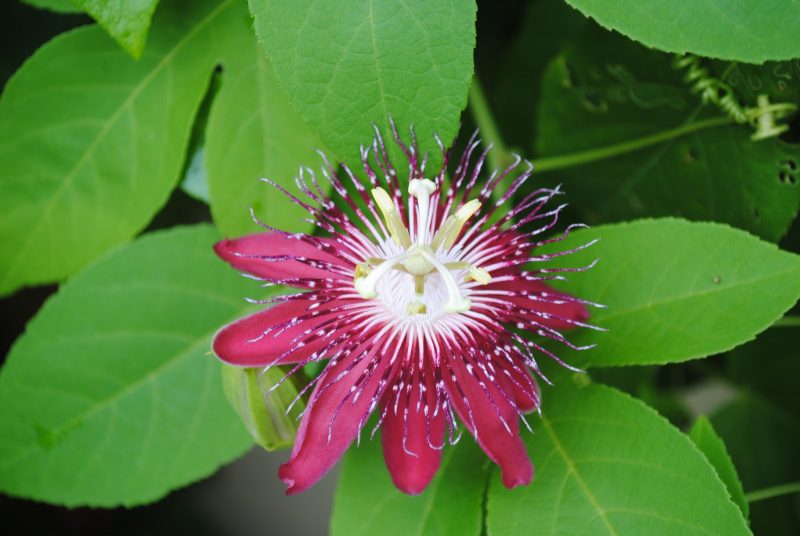
The primary task of the gardener, who decided to cultivate an exotic plant in his house, is to provide the necessary conditions for the full development of the vine:
- Lighting. Passiflora is demanding on lighting and will bloom only in bright light, which can be achieved by placing a flower near the southern windows. In the summer, it is worth moving the flower to fresh air, in a place protected from drafts.
- Temperature. The thermophilic plant does not tolerate extreme heat. The optimum temperature value is in the range of 22-25 ° C. And the maximum permissible value is 30 ° C. With the advent of winter, tropical liana needs to be organized in a cool room where the temperature range is 10-14 ° C.
- Humidity. Like most inhabitants of the tropics, passionflower needs daily spraying in the evening, as well as shower procedures in extreme heat.
- Support. The plant quickly develops shoots and lignified, and buds, leaves and inflorescences make them even heavier, so the flower needs a fairly strong support.
Attention! Bathing the plant in the shower should be very careful not to damage the fragile shoots.
Watering
Water supplies should be regular, maintaining the soil in a slightly moistened state. In this case, the remaining liquid from the pan after watering must be drained.
Fertilizer and fertilizer
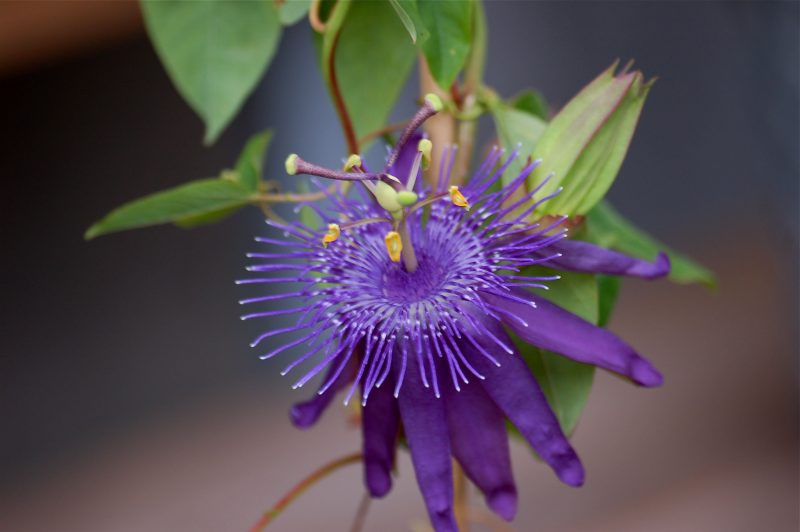
During the active vegetation period, which is observed in passiflora from February to September, top dressing is carried out twice a week using different fertilizers and application methods:
- Every month and a half, the plant is fed with the foliar method.
- Soil enrichment is carried out by applying organic fertilizers and mineral complexes for flowering plants with constant alternation after preliminary wetting of the substrate.
Trim nuances
In the first year of life, the liana is not pruned, which later becomes the annual spring procedure.
During:
- Strong shoots do not touch.
- Young shoots pinch.
- The apical and shoots growing at the base are trimmed.
- Dry, diseased and injured branches are removed.
- Places of cuts are sprinkled with charcoal.
Transfer
Only young plants should be transplanted annually. As the passiflora grows older, the interval between transplants increases to 3-4 years.
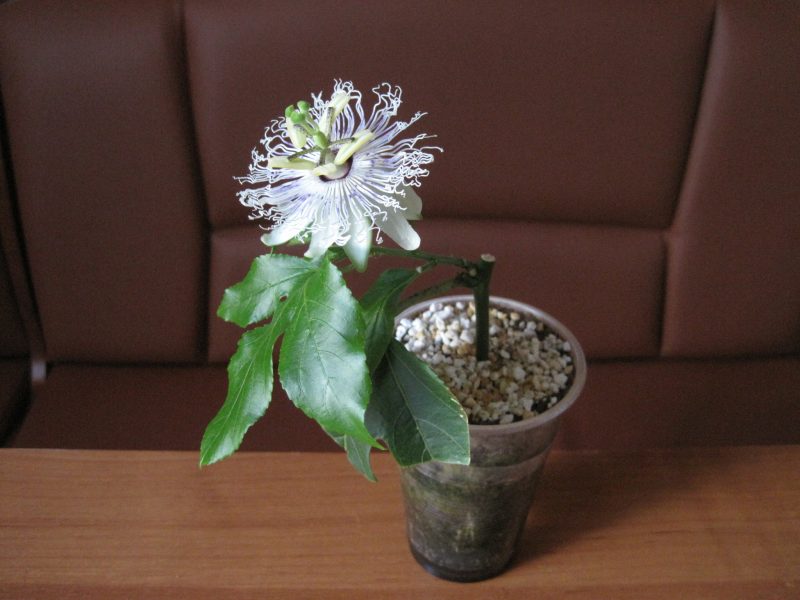
The procedure should adhere to the following algorithm of actions:
- A larger diameter pot is selected.
- A drainage layer of perlite, expanded clay or gravel is placed in the tank.
- A loose substrate with good air and water permeability is prepared from equal turf land, peat and sand in equal parts.
- From above, a flower with an old earthen lump passes over a drain.
- The remaining space is covered with prepared soil mixture.
Pests, Passiflora Diseases and Control Methods
Passiflora is not often affected by harmful organisms.
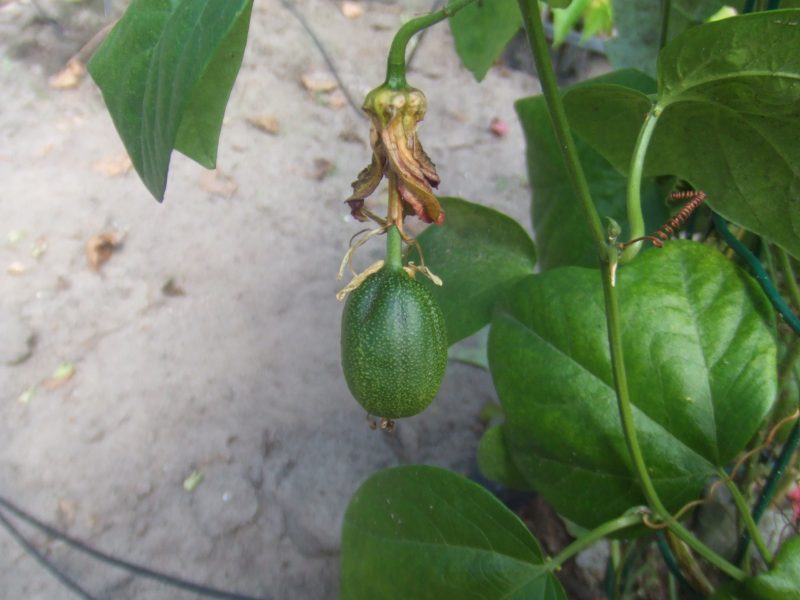
However, in case of violation of the regulations on the content of the plant may be noted:
- Gray rot and rust are fungal diseases, the development of which is associated with excessive watering. Treated with fungicides.
- Spotting, late blight, fusarium, scab - infectious diseases, with the appearance of which the affected specimens are destroyed, because they will not be able to save them.
- Spider mites, thrips, whiteflies, mealybugs, aphids are common pests in indoor floriculture that can be eliminated by treatment with a systemic insecticide.
How to propagate passiflora
A tropical plant propagates by generative and vegetative methods.
Seed method
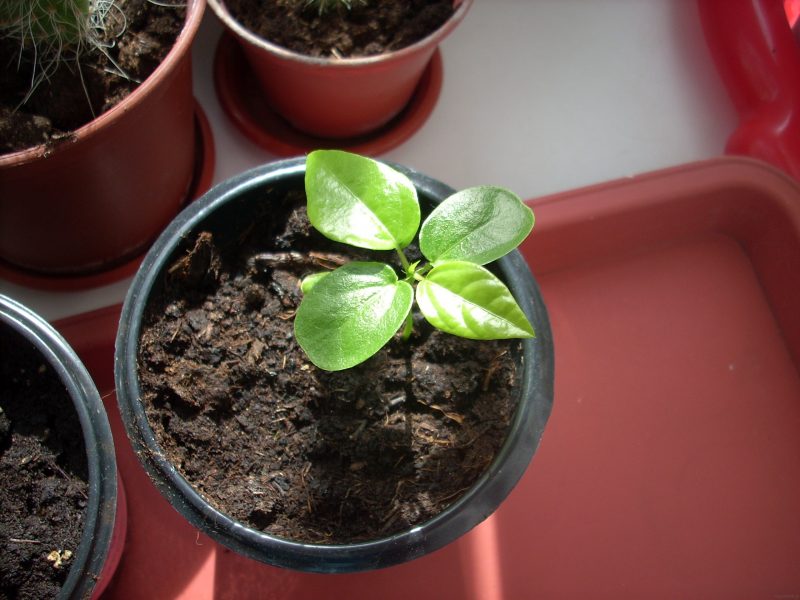
Growing passionflower from seeds is a long process that has its own nuances:
- High-quality, germinating seed is purchased from licensed manufacturers.
- The seed shell is slightly damaged, after which they are soaked for two days in warm water.
- Swollen seeds are pressed into a light substrate and covered with glass.
- The capacity is transferred to a room with bright lighting.
- After emergence, the glass is removed.
- Seedlings with one pair of real leaves dive and illuminate with phytolamps.
Attention! The emergence of seedlings can take from 1 to 12 months.
Propagation by cuttings
A more productive method in which:
- From new spring shoots cuttings with 2 pairs of true leaves and a growth point are cut.
- In cuttings, the lower pair of leaf plates is removed, and the cut sites are treated with growth stimulants.
- In pots with a loose substrate, holes are made with a pencil to the very bottom.
- Cuttings are placed in the recesses so that the remaining pair of leaves is on the surface of the substrate.
- Glass caps (cans) are installed above the cuttings, which are systematically removed for ventilation and moisturizing.
- After 20 days, banks are withdrawn.
- Fortified plants are transplanted into large pots.
Problems that flower growers may encounter

Violating the rules for care, you may encounter such problems:
- Lack of colors. The problem can be caused by poor lighting, an excess of nitrogen and an inadequate duration of the resting phase.
- Yellowing leaves. The reason may lie in the population of the flower with a spider mite, an excess of moisture, and a lack of lighting.
- Reset buds. May occur due to changes in normal conditions of detention causing stress, or due to lack of nutrients.
- Drying of the tips of the leaf blades. If there is such a problem, then the room is too dry air.
So, passionflower is a very decorative and exotic flower that can give the interior a special charm. However, to grow a spectacular plant, you need to make a little effort.












